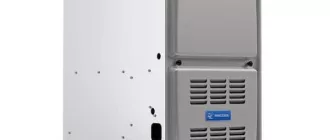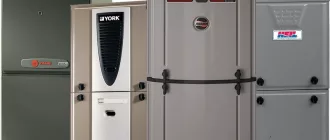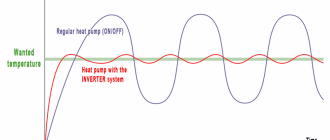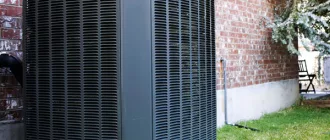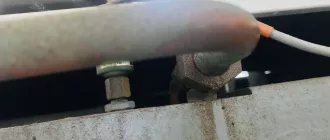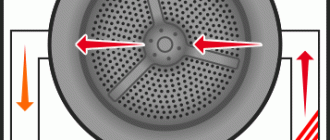Furnace Problems To Be Aware of This Winter
As the winter season approaches, it’s important to be aware of common furnace problems that could potentially arise. The furnace plays a vital role in keeping our homes warm and comfortable during the colder months, so it’s crucial to ensure that it is functioning properly. By being proactive and vigilant, homeowners can avoid major issues and costly repairs.
One common problem to watch out for is a faulty ignition system. If the furnace fails to ignite, it can result in a complete breakdown of the heating system. Ignition issues can be caused by a variety of factors, such as a malfunctioning pilot light or a faulty electronic igniter. Regular maintenance and inspection can help identify and resolve these issues before they escalate.
Another potential problem that homeowners should be aware of is a clogged air filter. A dirty or clogged air filter can restrict airflow, causing the furnace to work harder and less efficiently. This can lead to increased energy consumption and reduced heating performance. Regularly replacing or cleaning the air filter can help prevent this issue and improve the overall efficiency of the furnace.
Lastly, a malfunctioning thermostat can also pose problems during the winter months. A thermostat that is not functioning properly can result in inaccurate temperature readings, causing the furnace to cycle on and off unnecessarily or fail to provide adequate heat. It’s essential to test and calibrate the thermostat regularly to ensure it is working correctly and accurately controlling the temperature.
In conclusion, staying aware of common furnace problems and taking proactive measures can help homeowners avoid costly repairs and ensure their furnace operates efficiently throughout the winter season. Regular maintenance, inspection, and keeping an eye out for issues like faulty ignition systems, clogged air filters, and malfunctioning thermostats are essential for a warm and comfortable home.
Common Furnace Problems to Watch out for this Winter
This winter, it is important to be aware of the potential problems that can arise with your furnace. By keeping an eye on these issues, you can ensure that your furnace is functioning properly and efficiently throughout the colder months.
Clogged Air Filters: One common problem that can occur during the winter is a clogged air filter. When the filter becomes dirty and blocked, it restricts airflow and can cause the furnace to overheat. Regularly checking and replacing your air filters is crucial to avoid this problem.
Ignition Issues: Another common problem is ignition issues. If your furnace is not igniting properly, it can lead to a lack of heat and a decrease in efficiency. It is important to have a professional inspect and repair any ignition problems to ensure your furnace is running smoothly.
Thermostat Malfunctions: Malfunctioning thermostats can also be a common problem during the winter. If your thermostat is not reading temperatures accurately or is not properly communicating with the furnace, it can cause inconsistent heating or a complete shutdown. Regularly testing and calibrating your thermostat can help prevent these issues.
Lack of Maintenance: Neglecting regular maintenance and inspections can lead to various problems with your furnace. From a buildup of dirt and debris to worn-out parts, lack of maintenance can cause decreased efficiency and system failures. It is important to schedule annual furnace maintenance to catch any potential issues before they become major problems.
Carbon Monoxide Leaks: Carbon monoxide leaks can be extremely dangerous and can occur when there is a malfunction in your furnace’s combustion process. It is crucial to have carbon monoxide detectors installed throughout your home and to schedule regular furnace inspections to detect and fix any potential leaks.
By being aware of these common furnace problems and taking the necessary precautions, you can ensure that your furnace is operating efficiently and safely throughout the winter months.
Ignition Failure
One of the common furnace problems to be aware of this winter is ignition failure. The furnace’s ignition system is responsible for starting the combustion process and igniting the fuel. If the ignition system fails, the furnace will not be able to produce heat.
Ignition failure can occur due to various reasons. Some of the possible causes include a malfunctioning ignition switch, a faulty ignition control module, or a dirty or corroded ignition electrode. Additionally, a lack of fuel or a blocked gas line can also prevent the furnace from igniting properly.
If you experience ignition failure with your furnace, it is important to address the issue promptly. Ignition failure can result in a lack of heat and, in some cases, can be a safety hazard. We recommend contacting a professional HVAC technician to diagnose and resolve the problem.
To prevent ignition failure, it is important to schedule regular furnace maintenance. A professional technician can inspect and clean the ignition system, ensuring that it is in proper working order. Additionally, keeping the furnace’s air filter clean and replacing it regularly can help prevent ignition problems and improve overall furnace performance.
If you notice any signs of ignition failure, such as a clicking sound but no flame, or if your furnace is not producing heat, don’t hesitate to take action. Ignition failure is one of the common furnace problems that can occur during the winter, but with proper maintenance and prompt repairs, you can keep your furnace running smoothly and keep your home warm and comfortable.
In summary, ignition failure is a common furnace problem that can occur during the winter. It can be caused by issues with the ignition system, such as a malfunctioning switch or a dirty electrode. Prompt action and regular furnace maintenance can help prevent ignition failure and ensure the efficient operation of your furnace.
Pilot Light Problems
During the winter, it is important to be aware of potential furnace issues, one of which is pilot light problems. The pilot light is a small flame that ignites the gas in your furnace, allowing it to produce heat. If the pilot light goes out, your furnace won’t be able to function properly.
Common pilot light problems include a weak or inconsistent flame, a pilot light that won’t stay lit, or a pilot light that goes out frequently. These issues can be caused by a variety of factors, such as a dirty pilot orifice, a malfunctioning thermocouple, or a draft in the furnace area.
If you notice any problems with your pilot light, it is important to address them promptly. You can start by relighting the pilot light according to the manufacturer’s instructions. If the pilot light won’t stay lit or continues to go out, it may be necessary to clean or replace the thermocouple. It is also a good idea to inspect the area around the furnace for any drafts or obstructions that may be causing the pilot light to go out.
Regular maintenance can help prevent pilot light problems. Schedule an annual furnace tune-up to ensure that all components, including the pilot light, are clean and functioning properly. Additionally, keep the area around the furnace clear of debris and ensure that there are no sources of drafts nearby.
By being aware of pilot light problems and taking proactive measures to address them, you can ensure that your furnace operates efficiently throughout the winter season.
Blower Motor Malfunctions
One of the common problems that homeowners may encounter with their furnace is blower motor malfunctions. The blower motor is responsible for circulating the heated air throughout your home. If it malfunctions, it can lead to various issues with your furnace system. It’s important to be aware of the signs of blower motor problems so that you can address them promptly.
One sign of a blower motor malfunction is reduced airflow. If you notice that the airflow from your vents is weak or inconsistent, it could indicate a problem with the blower motor. This could be caused by a faulty motor or an obstruction in the air ducts.
Another common sign of a blower motor malfunction is strange noises coming from your furnace. If you hear grinding, squealing, or rattling sounds, it could indicate a problem with the blower motor. These noises can be a sign of worn-out bearings, loose belts, or other mechanical issues.
If your blower motor is not working at all, it could be due to an electrical issue. The motor may not be receiving power, or there could be a problem with the motor itself. In some cases, a blown fuse or tripped circuit breaker could be the cause of the motor failure.
It’s important to address blower motor malfunctions as soon as possible to prevent further damage to your furnace system. Regular maintenance and inspections can help identify and resolve these issues before they become major problems. A qualified HVAC technician can diagnose the problem and make the necessary repairs or replacements to ensure the proper functioning of your furnace.
In conclusion, being aware of the signs and symptoms of blower motor malfunctions can help homeowners identify and address potential problems with their furnace system. Prompt action and regular maintenance are crucial to keep your furnace running efficiently throughout the winter months.
Dirty or Clogged Filters
During the winter months, it’s important to be aware of potential furnace problems that could arise. One common issue that homeowners should keep an eye on is dirty or clogged filters. Furnace filters collect dust, dirt, and debris over time, and if they become too dirty or clogged, it can restrict airflow and hinder the efficiency of the furnace.
When filters are dirty or clogged, the furnace has to work harder to push air through the system, which can result in increased energy consumption and higher utility bills. Additionally, dirty filters can lead to poor indoor air quality, as they are unable to effectively remove allergens and pollutants from the air.
To prevent these problems, homeowners should regularly check their furnace filters and clean or replace them as necessary. It’s recommended to inspect filters at least once a month during the winter season. Disposable filters should be replaced, while reusable filters can be cleaned according to the manufacturer’s instructions.
Keeping filters clean not only helps to improve the efficiency and lifespan of the furnace but also ensures that the air circulating throughout the home is clean and healthy. Therefore, homeowners should prioritize regular filter maintenance as part of their winter furnace care routine.
Thermostat Issues
One of the common problems that you may encounter with your furnace is thermostat issues. The thermostat is the device that controls the temperature in your home, and if it’s not functioning properly, it can lead to problems with your furnace.
There are a few thermostat issues to be aware of. One issue is when the thermostat is not calibrated correctly. This can result in the temperature in your home being higher or lower than what you set it to. Another issue is when the thermostat is not accurately sensing the temperature in your home, causing it to turn the furnace on or off at the wrong times.
If you suspect that you’re experiencing thermostat issues, there are a few things you can do. First, check the batteries in your thermostat and replace them if necessary. Next, make sure that the thermostat is clean and free of any dust or debris. If the problem persists, you may need to call a professional to inspect and repair the thermostat.
No Heat or Insufficient Heat
One of the most common furnace problems that homeowners should be aware of during the winter is a lack of heat or insufficient heat. This can be a major inconvenience, especially during cold winter months.
There are several potential causes for this problem. One possibility is that the thermostat is not set correctly or is malfunctioning. It is important to check the thermostat and make sure it is set to the desired temperature. If the thermostat appears to be working properly, there may be an issue with the furnace itself.
Another possible cause of no heat or insufficient heat is a malfunctioning pilot light or ignition system. The pilot light should be lit and the ignition system should be functioning properly for the furnace to produce heat. If either of these components is not working, it may be necessary to call a professional for repairs.
Clogged air filters can also lead to a lack of heat or insufficient heat. Dirty air filters restrict airflow, causing the furnace to work harder and potentially overheat. Checking and cleaning or replacing the air filters regularly can help prevent this problem.
In some cases, the problem may be a result of a malfunctioning blower motor or a broken belt. These components play a crucial role in distributing warm air throughout the home. If they are not functioning properly, it can lead to a lack of heat or insufficient heat.
If you experience no heat or insufficient heat from your furnace during the winter, it is important to address the issue promptly. Ignoring the problem can lead to further damage and more expensive repairs. Contacting a professional HVAC technician is recommended to diagnose and resolve the issue.
Strange Noises
If you hear any strange noises coming from your furnace, it could indicate a potential problem. Common noises to listen for include banging, popping, rattling, or squealing sounds. These noises could be a sign of various issues that may require professional attention.
| Noise | Possible Problem |
| Banging | Delayed ignition, dirty burners, or a malfunctioning blower motor. |
| Popping | Thermal expansion of the air ducts. |
| Rattling | Loose or damaged parts, such as a loose blower wheel or motor mount. |
| Squealing | Loose or worn-out belts, motor bearings, or a malfunctioning blower motor. |
If you notice any of these noises, it’s important to address them promptly to prevent further problems or damage to your furnace. Contact a professional HVAC technician to diagnose and resolve the issue.
Constant Cycling
If you notice that your furnace is constantly cycling on and off, it could be a sign of a problem. This can happen when the furnace is overheating or if there is an issue with the thermostat. It’s important to be aware of this issue, especially during the winter months when the furnace is working hard to keep your home warm.
Malfunctioning Limit Switch
An important component in your furnace system is the limit switch. Its main function is to monitor the temperature inside the furnace and prevent it from overheating. However, if the limit switch malfunctions, it can cause a variety of problems that you need to be aware of, especially during the winter months.
When the limit switch is working correctly, it senses the temperature inside the furnace and shuts off the heating elements when the temperature reaches a certain limit. This prevents the furnace from overheating and causing damage. However, if the limit switch malfunctions, it may not shut off the heating elements when needed. This can lead to the furnace running continuously and potentially overheating, which can be dangerous.
Another issue that can arise from a malfunctioning limit switch is short cycling. Short cycling occurs when the furnace turns on and off frequently in short intervals. This can cause uneven heating in your home, as well as put unnecessary strain on the furnace, leading to increased wear and tear.
If you notice any of these problems during the winter, it is important to have your limit switch checked and potentially replaced by a professional HVAC technician. They will be able to diagnose the issue and provide you with the necessary repairs or replacements.
To ensure the smooth operation of your furnace during the winter months, it is important to be aware of the potential problems that can arise from a malfunctioning limit switch. Regular maintenance and inspections can help prevent these issues and keep your furnace running efficiently.
Cracked Heat Exchanger
One of the most serious problems that can occur with a furnace is a cracked heat exchanger. The heat exchanger is responsible for transferring heat from the burning fuel to the air that is then circulated throughout your home. When the heat exchanger is cracked, it can lead to a variety of issues.
Firstly, a cracked heat exchanger can cause a carbon monoxide leak, which is extremely dangerous. Carbon monoxide is a colorless and odorless gas that can be fatal if inhaled in high concentrations. It is important to be aware of the symptoms of carbon monoxide poisoning, such as headaches, dizziness, nausea, and confusion.
Furthermore, a cracked heat exchanger can decrease the efficiency of your furnace. The crack can disrupt the flow of air, which means that less heat is transferred to your home. This can result in higher energy bills as your furnace works harder to keep your home warm.
If you suspect that your heat exchanger is cracked, it is important to shut off your furnace immediately and call a professional HVAC technician. They will be able to inspect the heat exchanger and make any necessary repairs or replacements. Regular maintenance and inspections can help to detect any potential cracks before they become a major problem.
Overall, being aware of the potential problems associated with a cracked heat exchanger can help you to take prompt action and ensure the safety and efficiency of your furnace.
Leaking Gas or Carbon Monoxide
During the winter months, it is important to be aware of potential gas leaks or carbon monoxide leaks from your furnace. Gas leaks can occur if there are cracks or leaks in the gas line or connections. Carbon monoxide is a colorless and odorless gas that can be produced by a malfunctioning furnace.
If you suspect a gas leak or carbon monoxide leak, it is crucial to take immediate action. Gas leaks can be dangerous as they can lead to fires or explosions. Carbon monoxide leaks can be deadly if not detected and addressed promptly.
There are a few signs that may indicate a gas or carbon monoxide leak. These include a strong smell of gas, hissing sounds near the furnace, the pilot light constantly going out, or symptoms such as headache, dizziness, nausea, and confusion. If you notice any of these signs, leave your home immediately and call your gas company or emergency services.
To prevent gas or carbon monoxide leaks, it is recommended to have your furnace checked and serviced regularly by a professional. They can inspect the gas line, connections, and ensure the proper functioning of the furnace. Additionally, installing carbon monoxide detectors in your home can provide an extra layer of protection.
In conclusion, being aware of potential gas or carbon monoxide leaks during the winter is essential for the safety of your household. If you suspect a leak, take immediate action and seek professional help. Regular maintenance and the installation of carbon monoxide detectors can help prevent these issues.
Faulty Pressure Switch
One of the common furnace problems to be aware of during the winter is a faulty pressure switch. The pressure switch is responsible for ensuring that the furnace has proper air flow for operation. If the pressure switch is faulty, it can cause the furnace to malfunction and potentially shut down.
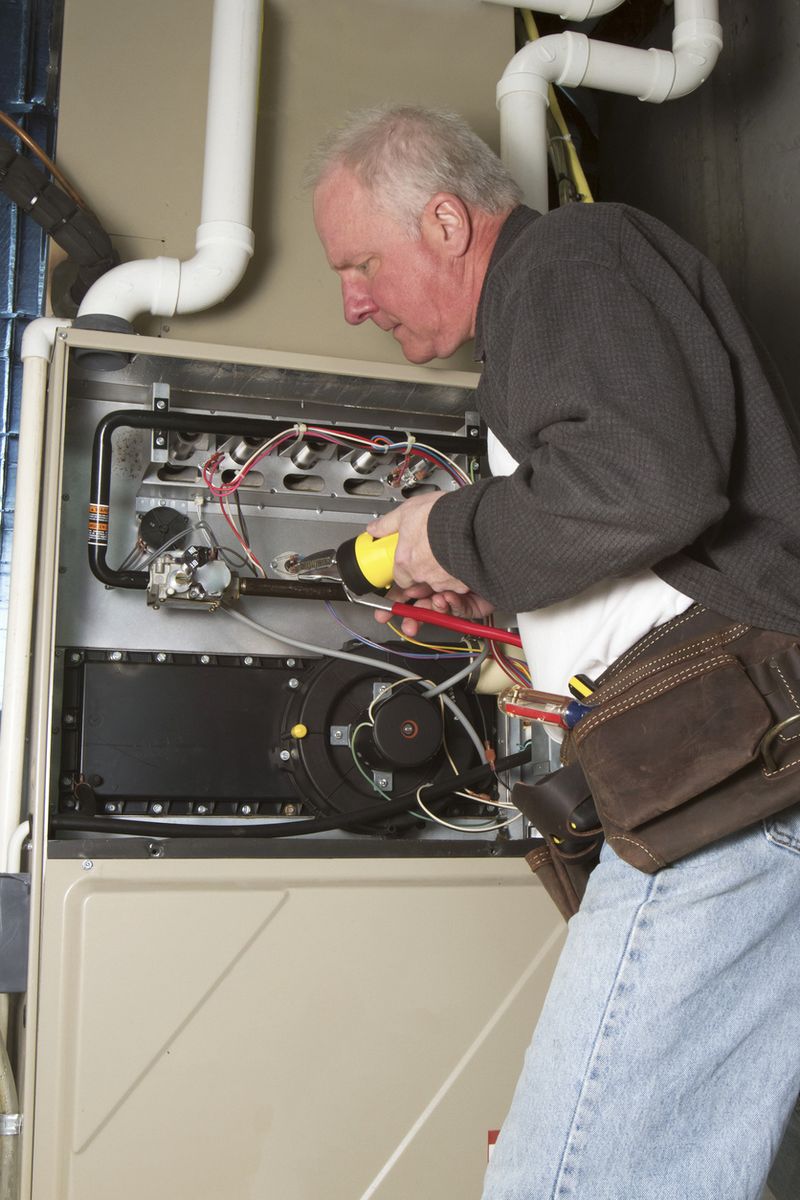
There are a few signs that may indicate a faulty pressure switch. These can include the furnace not turning on, the furnace cycling on and off frequently, or the furnace not producing enough heat. If you notice any of these problems, it is important to have the pressure switch checked and replaced if necessary.
A qualified HVAC technician can diagnose a faulty pressure switch by testing it with a multimeter and checking for any signs of wear or damage. If the pressure switch is indeed faulty, it will need to be replaced to ensure the furnace operates properly.
To prevent future issues with the pressure switch, it is important to have regular furnace maintenance performed. This can help to identify any potential problems before they become major issues. Additionally, keeping the furnace clean and free from debris can also help to prevent problems with the pressure switch.
In conclusion, a faulty pressure switch is one of the common furnace problems to keep an eye on during the winter. If you notice any signs of a malfunctioning pressure switch, it is important to have it checked and replaced if necessary to ensure the proper operation of your furnace.
Condensate Line Blockage
One common furnace problem to be aware of is a condensate line blockage. During the winter months, the condensation produced by your furnace needs to be properly drained away. If the condensate line becomes blocked, it can lead to a number of problems with your furnace.
The condensate line is responsible for carrying the excess water from the furnace to a drain line. Over time, dirt, debris, and mineral deposits can accumulate in the line, causing a blockage. When this happens, the condensate cannot drain properly and may back up into the furnace. This can result in reduced efficiency, water damage, and even potential furnace failure.
There are a few signs that may indicate a condensate line blockage. If you notice water pooling around your furnace, a gurgling sound coming from the furnace, or an error message on your thermostat indicating a condensate issue, it is likely there is a blockage in the condensate line.
To resolve a condensate line blockage, you can try flushing the line with a mixture of water and vinegar to break up any clogs. However, if the blockage is severe or persists, it is best to call a professional HVAC technician to inspect and repair the issue.
Regular maintenance and cleaning of the condensate line can help prevent blockages and ensure your furnace operates efficiently throughout the winter.
| Water pooling around the furnace |
| Gurgling sound coming from the furnace |
| Error message on the thermostat indicating a condensate issue |
Electrical Problems
During the winter season, it’s important to be aware of potential electrical problems with your furnace. Faulty wiring, circuit breaker issues, and blown fuses can all disrupt the operation of your furnace and leave you without heat. If you notice any flickering lights, unusual sounds coming from the furnace, or if your furnace repeatedly trips the circuit breaker, it’s important to address these issues promptly.
To diagnose and fix electrical problems, it’s best to call a professional HVAC technician. They have the knowledge and experience to safely handle electrical components and troubleshoot any issues. They will inspect the wiring, check the circuit breakers and fuses, and make any necessary repairs or replacements.
Regular maintenance is key in preventing electrical problems with your furnace. Have your furnace inspected and serviced annually to ensure all electrical components are in good working condition. This will help detect any potential problems before they become major issues.
In addition to professional maintenance, there are a few things you can do to protect the electrical system of your furnace. Avoid overloading the circuit by plugging in too many appliances or electronics into the same outlet. Keep the area around the furnace clean and free of dust and debris, as this can pose a fire hazard. If you’re experiencing frequent power outages or surges in your area, consider investing in a surge protector to safeguard your furnace and other electronic devices.
| Flickering lights | Faulty wiring, loose connection | Call a professional technician to inspect and repair the wiring |
| Circuit breaker trips | Faulty wiring, overload | Have a professional technician inspect the wiring and replace or upgrade the circuit breaker |
| Blown fuses | Faulty wiring, overload | Replace blown fuses and have a professional technician inspect the wiring |
Uneven Heating
As winter approaches, it’s important to be aware of common furnace problems that can impact the heating in your home. One such concern is uneven heating. Uneven heating occurs when some areas of your home feel warmer than others, while others remain chilly.
There are several possible causes for uneven heating. One possibility is that you have blocked or closed vents in certain rooms, which restrict the flow of warm air. Another cause could be a malfunctioning thermostat, which inaccurately measures the temperature in your home and fails to adjust the heating accordingly.
Additionally, leaky ducts can also contribute to uneven heating. If your ductwork is damaged or poorly sealed, warm air can escape before it reaches certain areas of your home, resulting in uneven temperatures.
If you’re experiencing uneven heating in your home, it’s important to address the problem promptly. Start by ensuring that all vents are fully open and unobstructed. Check your thermostat to make sure it’s functioning properly and consider replacing it if needed.
If you suspect that leaky ducts are the cause of the problem, you may need to call a professional to inspect and repair your ductwork. They can identify any leaks and seal them to improve airflow and heat distribution throughout your home.
By being aware of common furnace problems like uneven heating, you can take the necessary steps to ensure that your home stays warm and comfortable throughout the winter months.
Remember: regular maintenance and timely repairs can help prevent these problems from occurring in the first place, so it’s worth scheduling a furnace check-up before winter sets in.
Frequent Furnace Repairs
When it comes to keeping your home warm during the winter, being aware of common furnace problems can help you avoid unexpected breakdowns and costly repairs. Here are some frequent furnace issues you should keep an eye on:
| Problem | Solution |
| The furnace is not producing heat. | Check the thermostat settings and replace the air filter if it’s dirty. If the issue persists, contact a professional technician. |
| The furnace is making strange noises. | Inspect the blower motor and fan for any loose or damaged components. Consider lubricating the moving parts. If the noises continue, consult a qualified technician. |
| The furnace is cycling on and off frequently. | Check the air filter and clean or replace it if necessary. Ensure that the thermostat is functioning properly and hasn’t been set too high. If the problem persists, seek professional assistance. |
| The furnace is producing a burning smell. | Turn off the furnace immediately and contact a professional technician. A burning smell could indicate a serious issue, such as an electrical problem or a gas leak. |
| The furnace is not distributing heat evenly. | Check the air vents and make sure they are not blocked or obstructed. Consider having the air ducts cleaned to improve airflow. If the problem continues, consult an HVAC specialist. |
By staying vigilant and addressing these problems promptly, you can keep your furnace running smoothly throughout the winter season and ensure the comfort and safety of your home.
Q&A:
Why is my furnace not turning on?
There could be several reasons why your furnace is not turning on. It could be a problem with the thermostat, a tripped circuit breaker, a blown fuse, a faulty pilot light, or a malfunctioning motor. It is best to call a professional to diagnose and fix the problem.
How often should I replace my furnace filter?
It is recommended to replace your furnace filter every 3 months, or more frequently if you have pets or allergies. A clogged or dirty filter can restrict airflow and reduce the efficiency of your furnace.
Why is my furnace making strange noises?
Strange noises coming from your furnace can indicate a problem. It could be a loose belt, a faulty motor, a malfunctioning blower wheel, or a problem with the ignition system. It is best to have a professional inspect and repair the furnace to prevent further damage.
What should I do if my furnace is emitting a strange smell?
If your furnace is emitting a strange smell, it could be due to a variety of reasons. It could be a gas leak, a burning dust smell at the beginning of the heating season, or a problem with the air filter. It is important to turn off the furnace and call a professional to investigate the issue.

